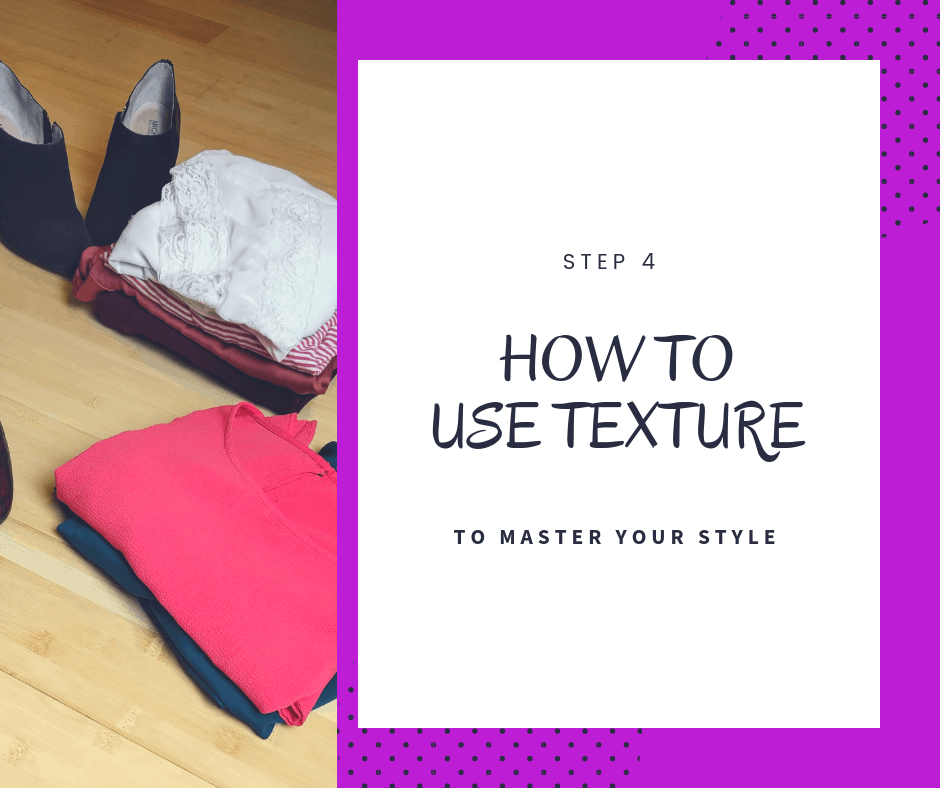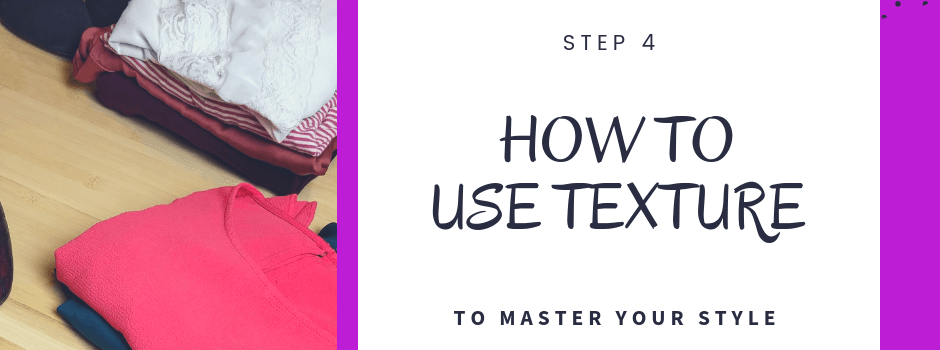
What is texture?
Texture is another ingredient in our style recipe that we can use to add interest and balance our figure. There are two different kinds of texture.
Visual texture
Visual texture is how something looks like it feels. Have you ever looked at something and expected it to feel one way, but when you touched it, it felt completely different? This can be achieved by using a print. The print or pattern can trick the eye into seeing something that’s not there.
Tactile texture
Tactile texture is the actual feel of the fabric or textile.Tactile texture is affected by many factors such as the fiber content of the yarns, the way the yarn is twisted or woven and how the fabric is processed after it is constructed.
What effect does texture have on the overall look of an outfit?
Varying textures in your outfit creates visual interest. The texture of a certain element or fabric can dictate where in the design hierarchy an element resides. Just as some patterns and colors are more attention seeking or dominant than others, so are some textures. When we talk about elements of design being dominant, subdominant or subordinate we look at whether or not the element advances or recedes. Textures that advance will be more dominant than those that are neutral or those that recede.
What kinds of textures advance?
Anything that physically sticks out or has a pile will advance. This includes fabrics like furs, corduroy, velvet, velveteen, terrycloth, tweed, boucle and the like. Fabrics that reflect light also advance. This would include your satins, sequins (sequins kind of fall in both of these categories because they stick out too), sateens, polished cotton, patent leather or leather substitute, and even coated fabrics.
What kinds of textures recede?
Textures that seem to absorb the light will recede or be subordinate elements. Anything that has a smooth, matte texture recedes. All of this is on a continuum. Not all matte textures will be on the same level just as the dominant advancing textures will all vary how much they advance. The color of the fabric will also play a big part in the hierarchy of dominance.
How can I use texture to play up my best features?
Use textures that are neutral or recede on areas you want to diminish or avoid drawing attention to. Use textures that advance on areas that you want to look larger or be a focal point. If your hips are larger than your bust, use dominant textures on your upper half, and use smooth textures on your lower half and vise-versa. Texture can also be used to balance other elements of design (or as I like to call them style recipe ingredients).
If you have any questions about what kind of textures to use or how to sue them, be sure and leave a question in the comments below. There are even some great visual references on the texture section of my style recipe board on pinterest. Already mastered texture? Move on to the next ingredient in the style recipe, color! Or bring it all together with body types.






